What Are the Potential Side Effects of Tummy Tuck Surgery?
Body Plastic Surgery
Tummy tuck surgery, or abdominoplasty, is a popular cosmetic procedure for removing excess fat and skin from the abdominal area. It is commonly performed on individuals who have lost a significant amount of weight or have had multiple pregnancies, resulting in loose or sagging skin around the abdomen.
While tummy tuck surgery can help improve the appearance of the abdomen and boost self-confidence, it is important to be aware of the risks and potential complications of the procedure. From health complications to emotional impact and financial concerns, several factors should be considered before deciding to undergo it.
Is Tummy Tuck Surgery Safe? In this essay, we will explore the various risks associated with tummy tuck surgery, including its side effects and long-term side effects. By shedding light on abdominoplasty risks, individuals considering the surgery can make well-informed choices while prioritizing their health and well-being.
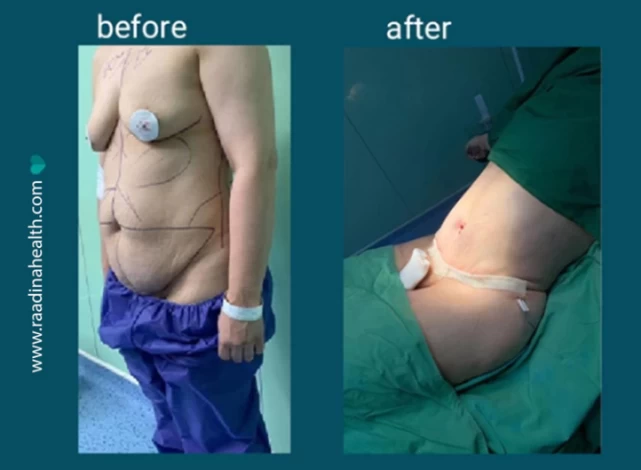
What Are the Risks Associated with a Tummy Tuck?
As with any surgery, the abdominoplasty procedure carries inherent risks that may vary depending on the patient's general health, the surgeon's experience, and the type of tummy tuck (full tummy tuck vs. mini tummy tuck). Some common side effects of tummy tuck surgery can include:
- Hematoma
- Infection
- Scarring
- Seroma
- Poor Wound Healing
- Excessive Bleeding
- Numbness and Sensation Changes
- Persistent Pain
- Unsatisfactory Cosmetic Results
- Fat necrosis
- Psychological Complications

Hematoma
A hematoma is a blood collection under the skin that can cause swelling and pain. It can occur due to trauma to the surgical site or inadequate drainage. The presence of a hematoma as one of the tummy tuck surgery side effects can cause pain and discomfort, swelling and bruising, delayed healing, and infection. Sometimes, a large or persistent hematoma may require drainage or other medical interventions to resolve.
Infection
Bacteria entering the surgical site as one of the other tummy tuck side effects can lead to an infection. This condition may cause various issues, including delayed healing, pain and discomfort, tenderness, swelling and redness, pus or other abnormal drainage, and systemic symptoms such as fever, chills, malaise, and noticeable or irregular scars.
Treatment for an infection may involve antibiotics, drainage of any abscesses, or other interventions.
Scarring
Scarring is an inevitable outcome of tummy tuck surgery, as an incision is made in the abdominal area to remove excess skin and fat and tighten the underlying muscles. The severity and appearance of scarring can vary depending on factors such as the patient's skin type, the surgical technique used, and how well the patient follows post-operative care instructions.
Scars from a tummy tuck are typically located along the lower abdomen, extending from hip to hip. While efforts are made to minimize their visibility, these scars may still be noticeable, especially in the early tummy tuck recovery time.
Moreover, scars undergo a maturation process over time, during which they may appear red, raised, and firm. As they mature, scars generally become lighter in color and flatten out. However, the final appearance of scars varies among patients.
Some patients may also be predisposed to developing keloid or hypertrophic scars, which are raised, thickened scars that extend beyond the boundaries of the original incision. These scars can be more noticeable and may require additional treatment to improve their appearance.

Seroma
A seroma is a collection of fluid that can accumulate under the skin at the surgical site. It can develop when the body's natural healing process leads to an overproduction of fluid in the space where tissue has been removed or manipulated during the surgery. If left untreated, a seroma can impede the normal healing process and potentially increase the risk of infection or other complications.
Seromas after a tummy tuck can be caused due to surgical trauma and inadequate drainage of fluid during or after surgery.
Seromas can present as swelling, pain, or a feeling of fluid accumulation in the abdominal area. In some cases, they may be visible or palpable as a soft, fluctuant mass under the skin. Seromas can also affect the aesthetic outcome of the tummy tuck by causing irregularities in the contour of the abdomen.
Small seromas may resolve independently, but larger or persistent seromas may require drainage through a needle aspiration or a small incision to remove the accumulated fluid.
Poor Wound Healing
Potential wound healing issues that may arise after a tummy tuck include delayed wound healing or wound dehiscence (the separation of the edges of the surgical incision). These wound-healing issues can cause discomfort, prolong the recovery period, and potentially affect the final cosmetic results of the tummy tuck procedure.

Excessive Bleeding
Excessive bleeding after tummy tuck surgery is a rare but serious complication. It can occur for various reasons, including certain medications such as blood thinners or aspirin, hematoma, infection, and seroma.
Numbness and Sensation Changes
During the tummy tuck procedure, nerves in the abdominal area may be cut, stretched, or otherwise affected, leading to numbness in the treated areas. Patients may also experience altered sensations, such as tingling, hypersensitivity, or a "pins and needles" feeling in the abdominal region as the nerves heal and regenerate.
While numbness and sensation changes are typically temporary and improve over time as the nerves heal, some patients may experience long-term or permanent alterations in sensation.
Persistent Pain
Persistent pain after tummy tuck surgery can be due to factors such as nerve damage, muscle strain, formation of scar tissue, infection, and seroma.
The surgeon may recommend pain medication, physical therapy, or other treatments to help alleviate the pain. In some cases, additional surgery may be necessary to address the underlying cause of the pain.
Unsatisfactory Cosmetic Results
Several factors can cause unsatisfactory cosmetic results, including inadequate skin removal, poor incision placement, uneven fat removal, poor wound healing, and poor muscle repair.
Poor cosmetic outcomes after a tummy tuck surgery can lead to dissatisfaction with the results and a negative impact on self-esteem. Revision surgery may be necessary to correct the issues and achieve the desired appearance.
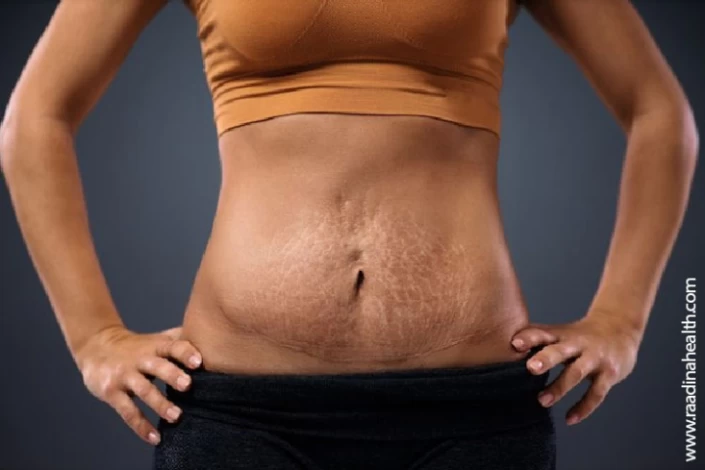
Belly Button Distortion
This is more of a characteristic than a risk in abdominoplasty: Your belly button may become distorted or even vanish entirely during the procedure. This occurs due to the tightening of the skin. The surgeon excises the surplus skin from the lower abdomen, and the remaining skin is pulled downward and tightened. Consequently, your belly button may appear significantly lower on your abdomen and seem misplaced.
Nonetheless, your plastic surgeon will address this issue by crafting a new belly button for you as part of the abdominoplasty procedure. It is typically shaped slightly oval rather than round and placed in its usual location. The creation and positioning of a new belly button are integral components of any tummy tuck surgery. Ensure that you discuss your preferences regarding your belly button appearance with your plastic surgeon during the consultation.
Fat necrosis
Fat necrosis is the death of fat tissue caused by a lack of blood supply or trauma to the area, which can occur after tummy tuck surgery. Symptoms can include lumps or masses, pain, skin changes, infections, and abnormal discharge (that looks like pus).
Fat necrosis can occur due to various reasons, including poor blood supply to the area, trauma to the surgical site, or excessive liposuction.
Psychological Complications
Tummy tuck surgery can have psychological effects on some patients. However, it is not common. Some patients may experience anxiety or depression after the surgery due to changes in their body image or concerns about the recovery process. However, most patients report feeling more confident and satisfied with their appearance after the procedure.
The Likelihood of Death in Tummy Tuck Surgery
Though the previously mentioned risks are common side effects of tummy tuck surgery, the chance of death is perceived to be highly improbable. The general consensus maintains that tummy tuck surgery is a safe procedure with a low mortality rate. Nevertheless, as with any surgical procedure, there are inherent risks, and in rare cases, complications may arise that could prove fatal.
Several factors could heighten the risk associated with undergoing a tummy tuck:
- Pre-existing Health Conditions
- Surgical Complications
- Infection and Sepsis
- Pulmonary Embolism
- Anaphylaxis
While the risk of death following tummy tuck surgery is considered rare, it is essential to recognize that it is not nonexistent. Prior to undergoing the procedure, it is imperative to engage in a comprehensive discussion regarding the potential risks with a qualified and experienced plastic surgeon.
How to Minimize the Risk of Complications after a Tummy Tuck?
There are several steps patients can take to help reduce the risk of tummy tuck side effects:
- Choose a qualified and experienced plastic surgeon
- Wear Compression Garments
- Follow pre-operative instructions
- Be honest about your medical history
- Take care of your incisions
- Watch for signs of complications
- Attend Follow-Up Appointments
- Take prescribed medications
- Mobilize early and gradually
Choose a qualified and experienced plastic surgeon
Make sure to select a board-certified plastic surgeon who specializes in tummy tuck procedures. Verify their credentials and ask for before and after photos of their previous patients. Experienced surgeons prioritize patient safety and adhere to stringent safety protocols throughout the surgical process. They will take necessary precautions to minimize the risk of infection, ensure sterile conditions, and maintain hygiene standards in the operating room. This greatly reduces the chances of post-operative complications.
Wear Compression Garments
Wearing compression garments after the surgery can help reduce tummy tuck risks by providing support and aiding in healing. Compression garments can apply gentle pressure to the treated area, which helps reduce swelling and inflammation. This can prevent the accumulation of fluid (seroma). They can also promote better blood flow to the surgical area, enhancing oxygen supply and nutrient delivery to the tissues. Improved circulation helps heal and can reduce the risk of complications such as blood clots.
Compression garments can also help keep the incisions and surgical site aligned properly, reducing tension and minimizing the risk of hypertrophic or keloid scarring. They can protect the surgical site from friction and irritation caused by clothing or other external factors.
Moreover, compression garments provide mild support, helping to keep the muscles in place and prevent excessive stretching, which can improve the overall outcome of the surgery.

Follow pre-operative instructions
Pre-operative instructions often include certain lifestyle changes such as quitting smoking, avoiding certain medications, and abstaining from alcohol or recreational drugs. By adopting healthy habits before and after the tummy tuck procedure, patients can enhance their overall well-being and support the body's healing process. Healthy lifestyle behaviors can include maintaining a healthy weight, exercising regularly, eating a nutritious diet, avoiding smoking and alcohol, staying adequately hydrated, and managing stress.
Your surgeon will likely ask you to avoid certain medications and supplements that can increase the risk of bleeding or other complications. This may include aspirin, ibuprofen, and certain herbal supplements.
Be honest about your medical history
Inform your surgeon about any medical conditions, allergies, or medications you are taking. This will help them determine the safest approach for your tummy tuck and minimize the risk of complications.
Take care of your incisions
Keep your incisions clean and dry to minimize the risk of infection. Avoid exposing them to excessive sunlight, and avoid soaking in pools, hot tubs, or bathtubs until cleared by your surgeon.
Watch for signs of complications
Pay attention to any unusual symptoms, such as excessive pain, swelling, redness, draining fluid, or fever, as these could be warning signs after tummy tuck surgery. Report these signs promptly to your surgeon.
Attend Follow-Up Appointments
Follow-up appointments allow the surgeon to assess the healing process and identify potential complications early on. This includes monitoring the incision site for signs of infection, ensuring proper wound healing, and identifying abnormal swelling or bruising.
Take prescribed medications
The surgeon may prescribe pain relievers, antibiotics, and medications to prevent blood clots. By following the prescribed medication regimen, a patient can help prevent infection, manage pain, and promote proper healing after surgery.
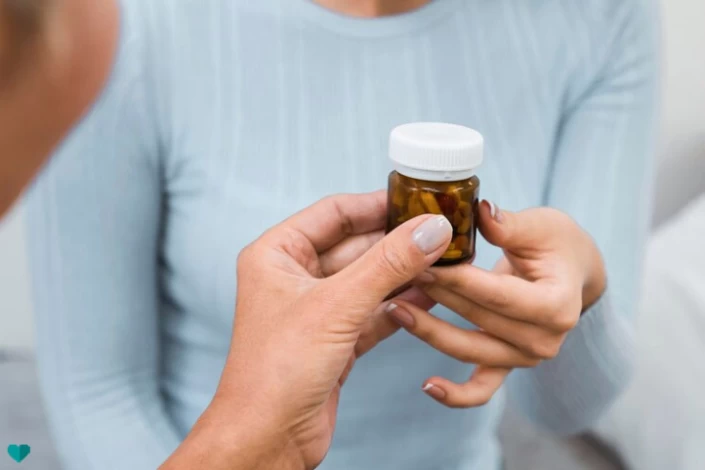
Mobilize early and gradually
Early mobilization helps improve blood circulation, which decreases the risk of blood clot formation in the legs (deep vein thrombosis). Blood clots can be dangerous and potentially life-threatening if they travel to the lungs (pulmonary embolism).
It can also promote muscle strength and flexibility and allow for better functional recovery. Moving gradually helps avoid excessive strain on the abdomen, reducing pain, discomfort, and swelling. It can expedite recovery and enable patients to return to their normal activities sooner.
Why Choose Iran for Tummy Tuck?
Iran is a popular destination for tummy tuck procedures due to the high quality of medical care and the expertise of its plastic surgeons. Many international patients choose to undergo tummy tucks in Iran because of the country's reputation for providing excellent medical services at affordable costs.
Iranian plastic surgeons are highly skilled and experienced in performing tummy tuck surgeries, and the medical facilities in Iran are equipped with state-of-the-art technology. Patients can expect top-notch care and achieve satisfying results while paying a fraction of the cost compared to other countries.
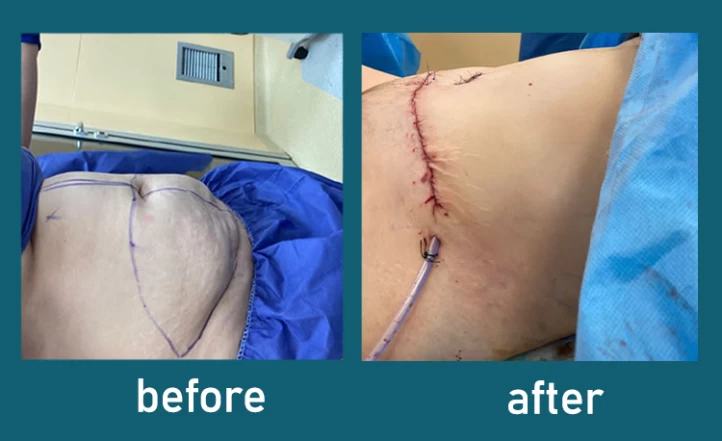
Final Word
While tummy tucks can provide significant aesthetic and functional benefits, it is essential for people considering this procedure to be aware of the potential risks involved. Complications such as infection, blood clots, and adverse reactions to anesthesia can occur. Therefore, it is crucial for individuals to thoroughly discuss the potential risks with their surgeon and ensure that they are well-informed about the procedure before making a decision. By being aware of the potential risks and taking necessary precautions, patients can make informed choices regarding tummy tuck surgery and minimize the likelihood of complications.
Frequently Asked Questions about Risks of Abdominoplasty
1) Is a tummy tuck safe?
Yes, a tummy tuck is generally considered safe when performed by a qualified and experienced plastic surgeon and under appropriate medical conditions. However, patients need to discuss potential risks and complications with their surgeon and follow pre-operative and post-operative instructions carefully to ensure a successful outcome.
2) Will there be noticeable scarring after abdominoplasty?
Abdominoplasty does leave scars. However, the extent and visibility of the scars can vary. The surgeon carefully places the incisions to be as inconspicuous as possible, often within the bikini line. Scarring typically fades over time, and various scar management techniques can be used to minimize its appearance.
3) Can tummy tuck affect future pregnancies?
Abdominoplasty may not pose a direct risk to future pregnancies. However, it can potentially alter the aesthetic results achieved through the procedure. Patients are generally recommended to postpone abdominoplasty until after completing the family, as pregnancy can stretch and separate the abdominal muscles and cause additional skin laxity.
4) Are there any long-term risks or complications associated with abdominoplasty?
While uncommon, some long-term risks or complications of abdominoplasty may include persistent pain, numbness or changes in skin sensation, contour irregularities, asymmetry, or dissatisfaction with the aesthetic outcome. Regular follow-up visits with the surgeon can help address concerns and manage potential complications.
5) How common are complications from abdominoplasty?
Tummy tuck complications are rare, especially when a qualified and experienced plastic surgeon performs the procedure. However, it's important to be aware of the potential risks.
6) How likely will I need revision surgery after abdominoplasty?
The need for revision surgery varies among patients. Factors such as the extent of the initial procedure, individual healing characteristics, and personal aesthetic goals can influence the likelihood of needing revision surgery. Your surgeon will discuss this possibility with you during the consultation.
7) Are there specific factors that can increase the risk of complications after a tummy tuck?
Yes, certain factors such as smoking, obesity, diabetes, and a history of blood clotting disorders can increase the risk of complications. It's important to discuss your medical history and lifestyle factors with your surgeon to assess your risk profile.
8) How long does it take to recover from abdominoplasty, and what are the common signs of complications during recovery?
Recovery time can vary, but most patients can expect to resume light activities within a few weeks and more strenuous activities within a few months. Signs of potential complications during tummy tuck recovery include excessive swelling, persistent pain, fever, unusual discharge from the incision site, or any other concerning symptoms.
9) How can I minimize the risks of developing blood clots (deep vein thrombosis) after abdominoplasty?
To minimize this risk of blood clots, your surgeon may recommend compression garments, early ambulation, and medications to prevent clot formation.
10) How can I best prepare for abdominoplasty to reduce the risk of complications?
Preparing for surgery involves following your surgeon's pre-operative instructions, which may include lifestyle changes, medication adjustments, and quitting smoking. Open communication with your surgeon and adherence to pre-operative guidelines can help minimize the risk of complications.
11) Are Abdominoplasty Procedures More Challenging Than C-sections?
This is a frequent inquiry among mothers considering abdominoplasty following previous cesarean sections. They seek a comparison between the two surgeries.
Regrettably, every surgical procedure carries inherent risks. Abdominoplasty typically entails more extensive dissection, resulting in different risks compared to a C-Section. As results show, abdominoplasty generally involves a longer recovery period.




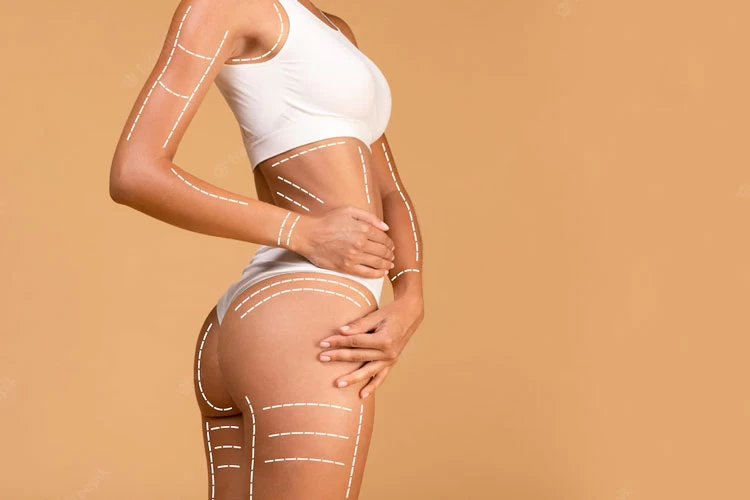


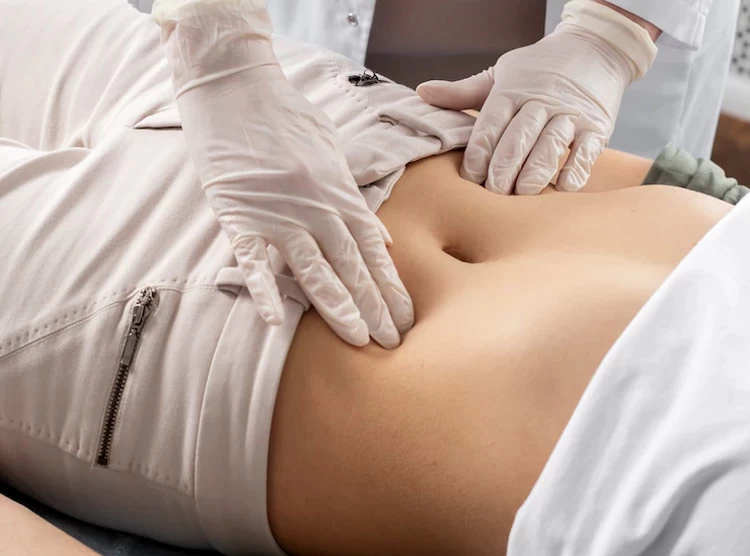

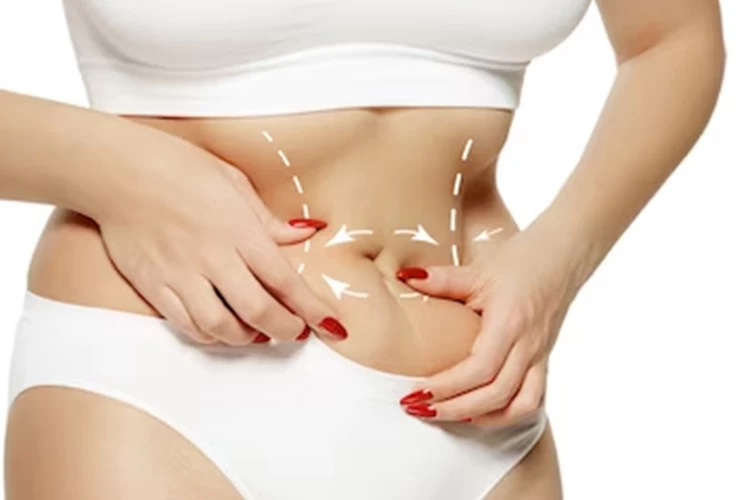

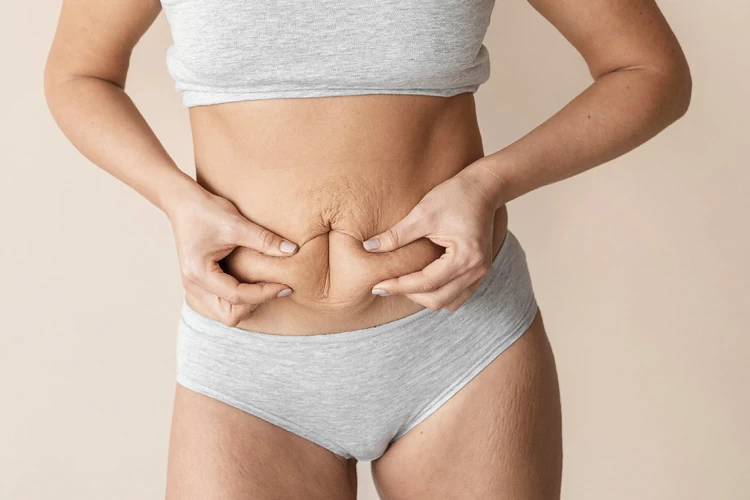
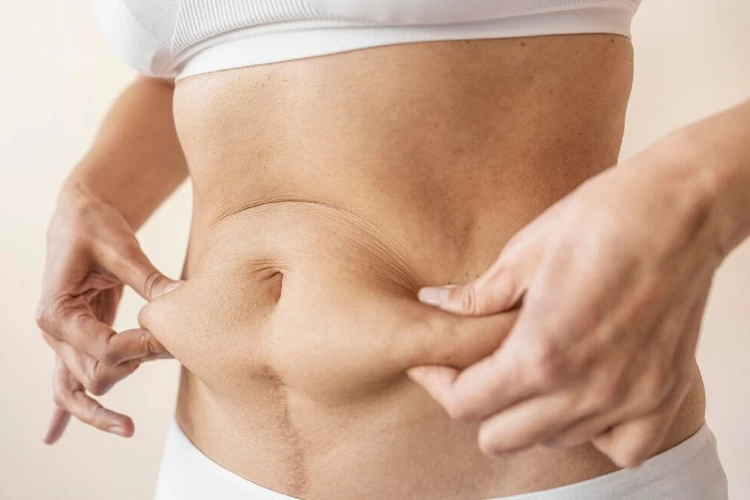

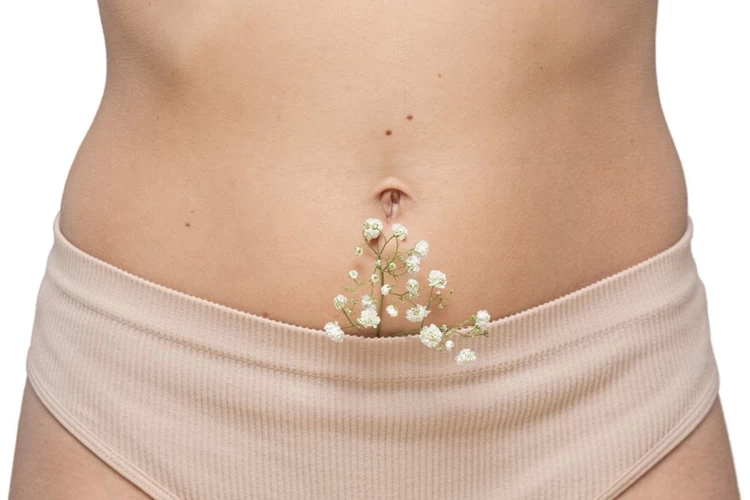


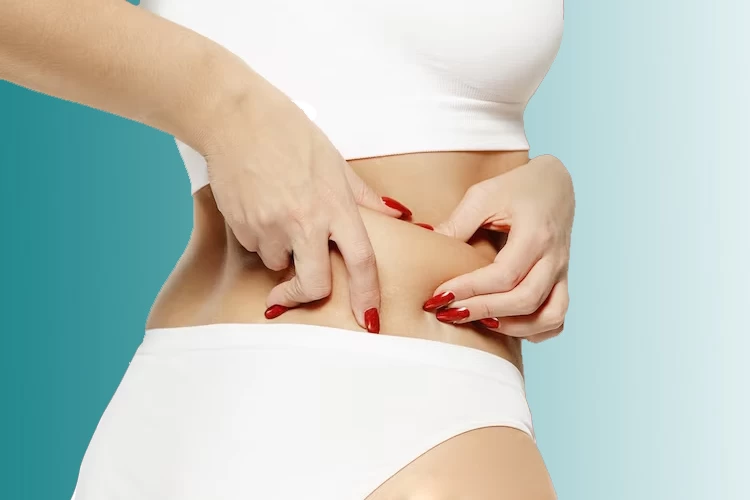
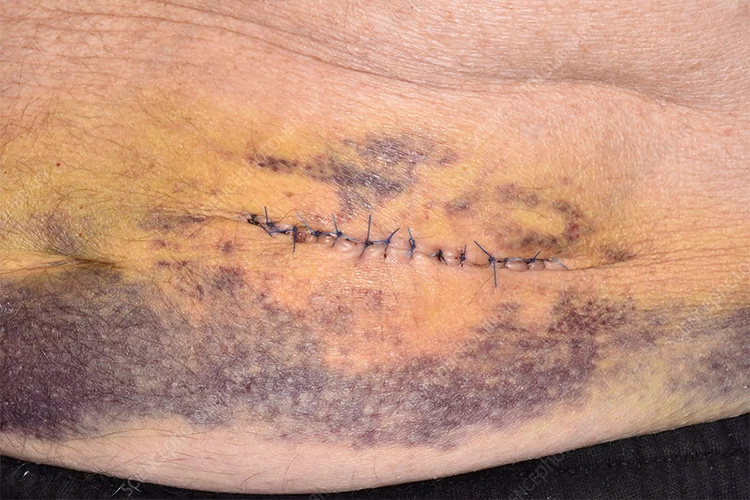

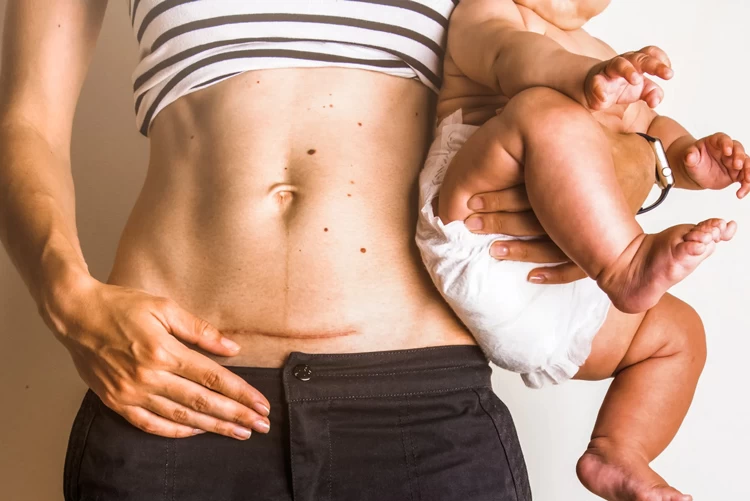

No reviews
Your comment